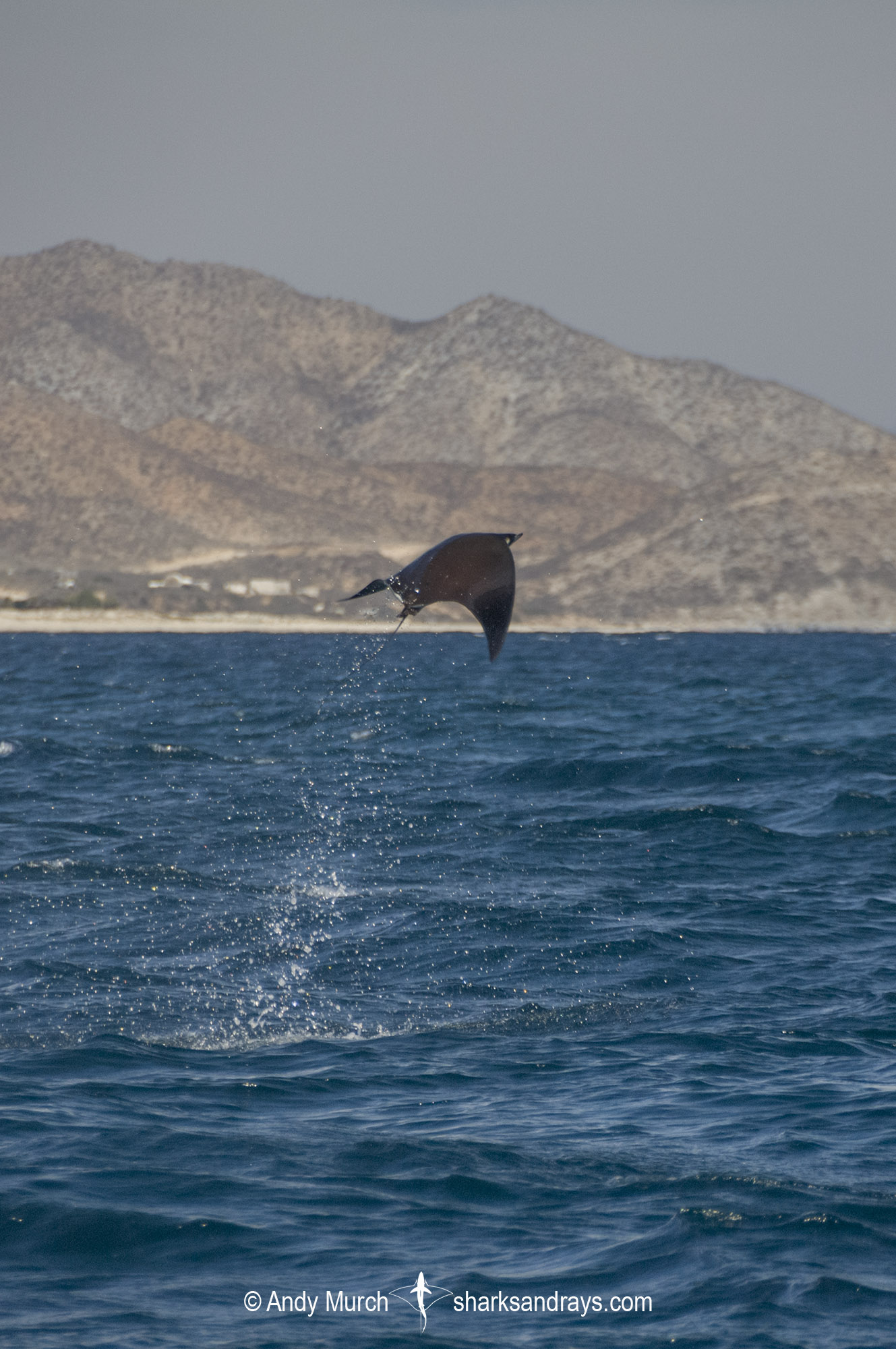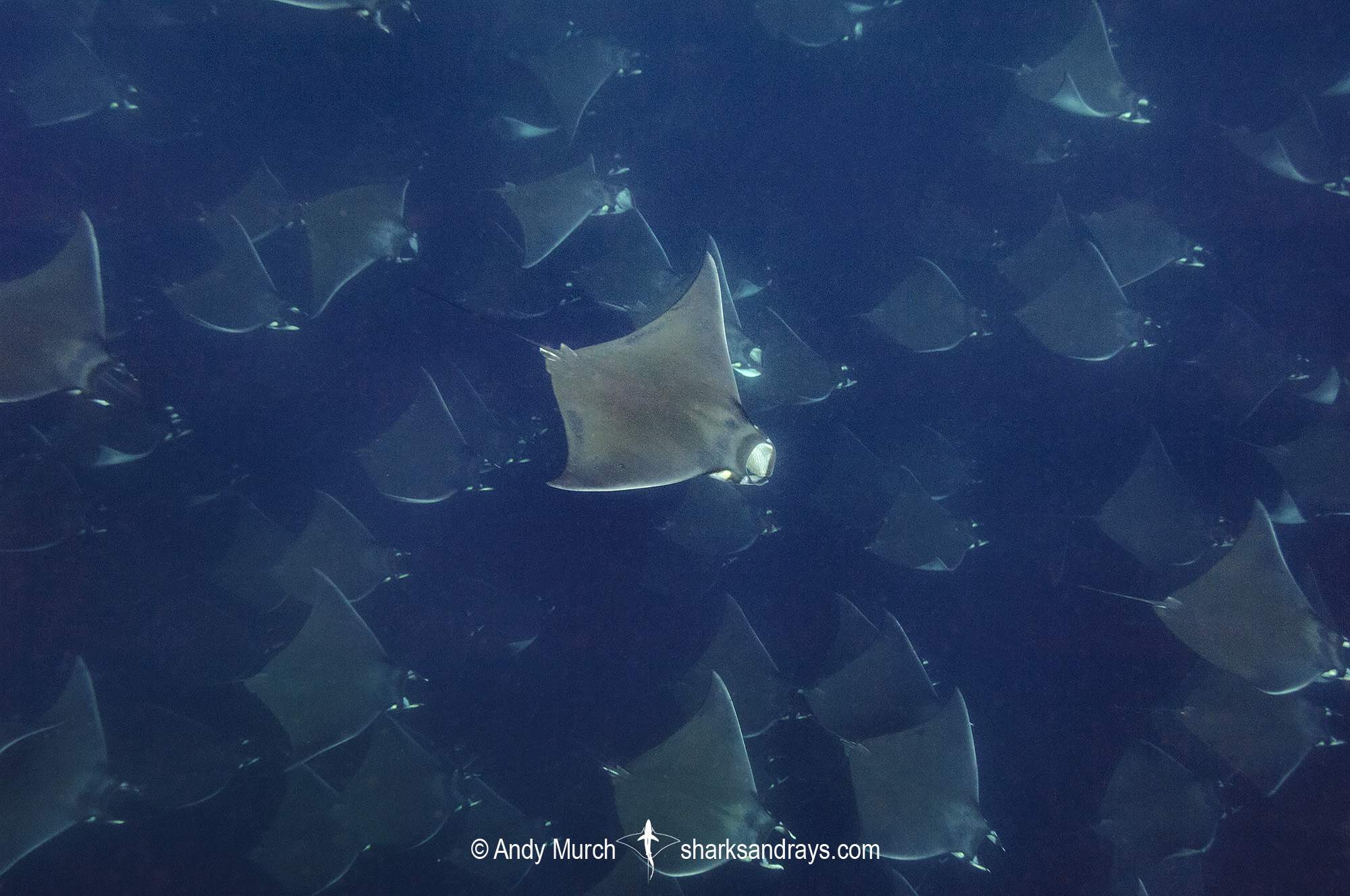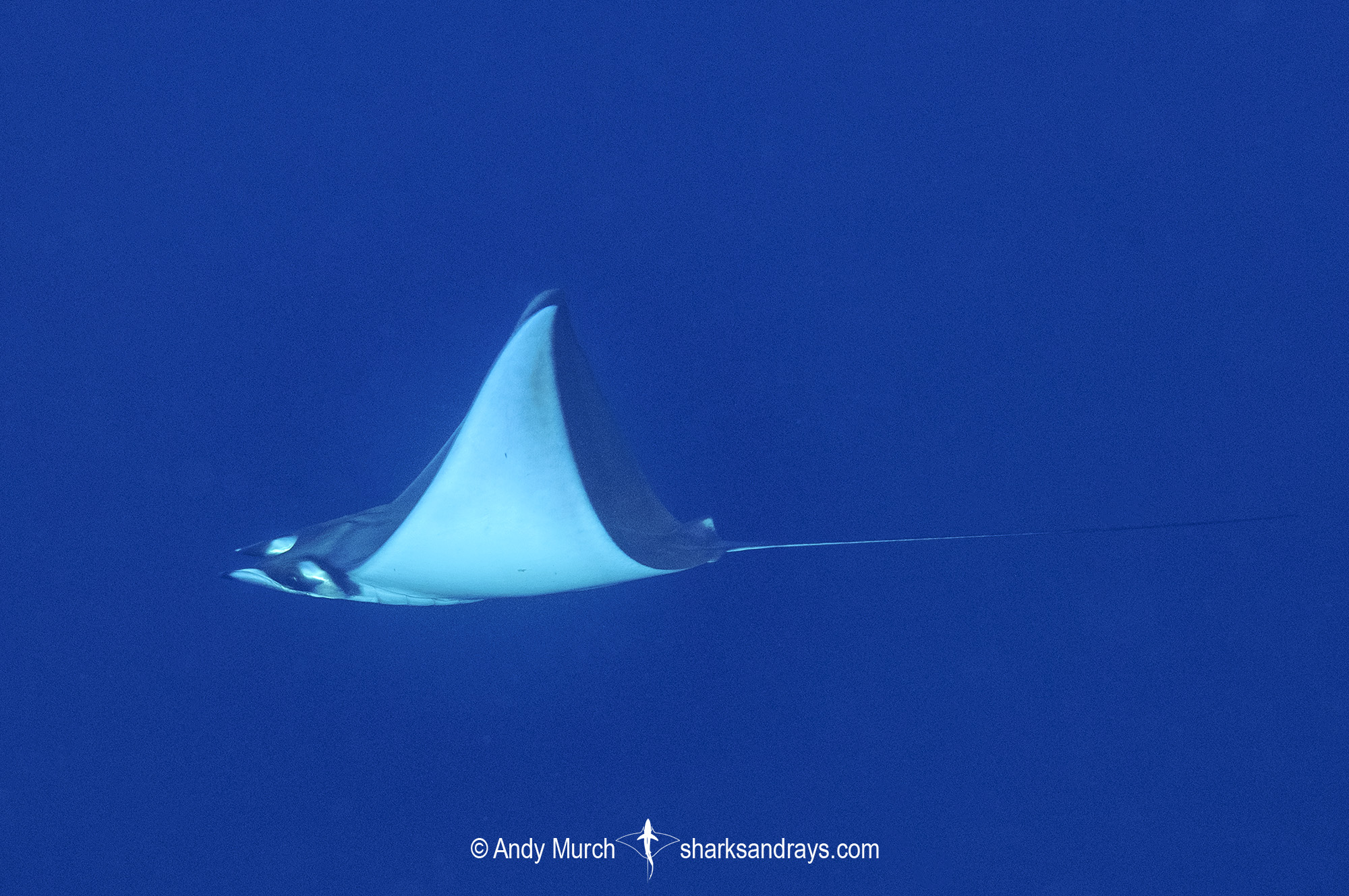Common name(s)
Munk’s Devil Ray, Pygmy Devil Ray, Munk’s Mobula Ray.
Identification
A small mobula ray with a broad, kite-shaped disc and a broad, subterminal mouth. Mouth width 0.11-0.13 x disc width. Upper and lower tooth bands cover approximately 60% of mouth width. Circular spiracles positioned laterally, below pectoral origin. Branchial filter plates separate on each gill arch.
Disc width 1.6-1.8x length. Anterior margins of pectoral fins straight. Pectoral fin apices acutely angular and falcate. Pelvic fins very small. One small dorsal fin present at base of tail; posterior margin straight. Denticles widely spaced. Tail long and whiplike; equal to or greater than disc length when intact. Caudal sting absent.
Colour
Dorsum purplish-grey to brown, with a dark band across upper margin of mouth, and a second wider band posterior to the first. Ventrum white; often with dusky pectoral tips. White tip in dorsal fin; sometimes indistinct.
Size
Maximum disc width 110cm. Disc width at birth approximately 35cm.
Habitat
Pelagic in tropical/subtropical seas. Usually found in coastal areas but sometimes offshore. Surface to at least 30m.
Distribution
Tropical/sub-tropical eastern Pacific. Found from the Sea of Cortez to Peru including the Galapagos Islands.
Conservation Status
VULNERABLE
The Pygmy Devilray has an extremely low reproductive output with only one pup born per litter, and is therefore likely to have very low productivity incapable of withstanding and recovering from even very low levels of fishing mortality. Increasing international trade in gill plates has led to the expansion of largely unregulated and unmonitored devilray (Mobula spp.) fisheries. The species is a target of large artisanal fisheries in México and Peru, and is taken as bycatch of small- and large-scale fisheries with much of this catch likely unreported or aggregated and reported as Mobula spp. There are no current or historical estimates of the population size and trend of the Pygmy Devilray and further information is required from throughout its range. Based on distribution data, high catchability due to its schooling behaviour, limited productivity, directed and targeted fisheries, ongoing demand in trade, and a dataset showing declines in devilray sighting records around Cocos Island, it is suspected that the Pygmy Devilray may have been depleted in areas where significant fisheries or threats for mobulids exist. There are likely some refuges from fishing, for example in Ecuador’s Galápagos Marine Resources Reserve and while it should be noted that illegal fishing is an ongoing issue in the reserve, this refuge suggests that this species may not be at a level of extinction risk characteristic of some other mobuild rays. Overall, it is suspected that this species has undergone a reduction of ~30–49% over the last three generations (38 years), with a further population reduction suspected over the next three generation lengths (2018–2056). Therefore, the Pygmy Devilray is assessed as Vulnerable A2d+3d.
Citation
Marshall, A., Barreto, R., Carlson, J., Fernando, D., Fordham, S., Francis, M.P., Herman, K., Jabado, R.W., Liu, K.M., Rigby, C.L. & Romanov, E. 2019. Mobula munkiana. The IUCN Red List of Threatened Species 2019: e.T60198A124450956. https://dx.doi.org/10.2305/IUCN.UK.2019-3.RLTS.T60198A124450956.en. Downloaded on 05 March 2021.
Reproduction
Aplacental viviparity. One pup per litter.
Diet
Diet mainly planktonic crustaceans. Predates heavily on mysid shrimps.
Behavior
An active swimmer that forms extremely large aggregations, sometimes in many thousands. Munk’s devil ray is famous for its high aerial breaches. Perhaps as part of a courtship display, many rays often breach in unison or in short succession. In the Sea of Cortez, this behavior has earned them the nickname ‘popcorn rays’.
Reaction to divers
Usually very difficult to approach underwater except during organized feeds.
Diving logistics
Massive schools of Munk’s mobulas are common in the southern Sea of Cortez and around the tip of Baja. Cabo Pulmo is a good spot to watch them breaching but the visibility can make underwater photography/encounters challenging.
There are a few operators in La Paz that arrange night dives where powerful lights are used to attract thick swarms of plankton, which in turn attracts scores of Munk’s devil rays. This is a highly entertaining encounter with opportunities to get extremely close to an otherwise very shy species.






